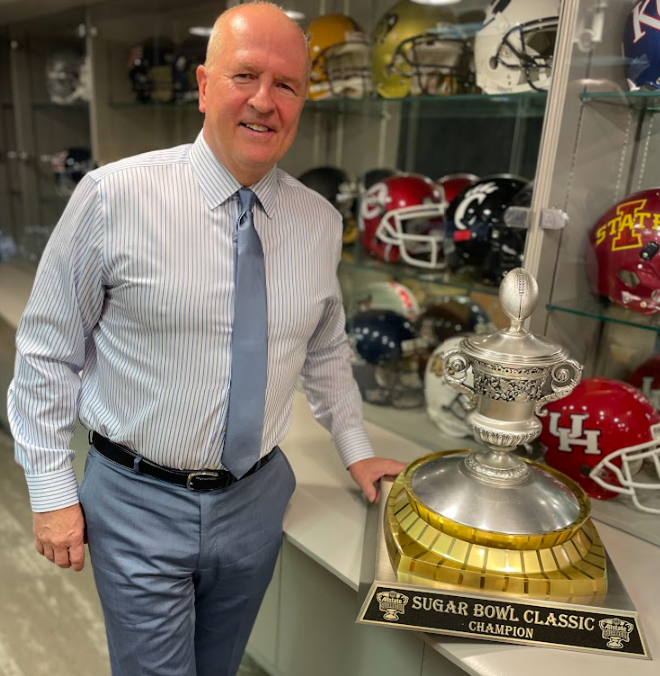
On New Year’s Day, the #2 ranked Washington Huskies will take on the #3 ranked Texas Longhorns in the Allstate Sugar Bowl here in New Orleans.
In the College Football Playoff picture this year, the Sugar Bowl is one of two semifinal bowl games that will lead to the CFP championship game, which will be played at NRG Stadium in Houston. From an outsider’s perspective, I’m talking about myself here, the Sugar Bowl is just one football game that always comes on television this time of year. But, from inside the non-profit organization responsible for operation of the Sugar Bowl, things are far more complex. Ahead of the big game, I met with Jeff Hundley, CEO of the Allstate Sugar Bowl.
“I’ve been here since 4:30 this morning and didn’t get home until about 9 o’clock last night. That just comes with a territory this time of year. I still get asked, I’ve been doing this for 30 years, and when I tell people I work for the Sugar Bowl I often get, ‘that’s a full-time’? I smile and move on, but I want to let them know exactly how much of a full-time job it is,” said Hundley.
That job is increasingly becoming more challenging as more cities want to penetrate the multimillion-dollar College Football Playoff scene. The Sugar Bowl’s contract with the CFP expires in two years. The Sugar Bowl and the city of New Orleans have a long history of hosting one of the premier bowl games in college football. But that tradition won’t guarantee that the commissioners of the College Football Playoff will keep the Sugar Bowl and New Orleans in a prominent place among a seemingly endless number of bowl games.
“As a member of the College Football Playoff, our game matters. The other bowl games are exhibitions, and they serve their purpose and have a place in the ecosystem, but the interest is less, the attendance is less,” Hundley told me.
The Sugar Bowl is trying to avoid being relegated to exhibition status. Hundley and the Sugar Bowl staff are in the midst of a massive effort to keep the Sugar Bowl relevant during a time of huge monetary and competitive changes in college football. Hundreds of millions of dollars are at stake in terms of money generated for the local economy of New Orleans, tax revenue and the various contracts related to maintaining the Sugar Bowl’s status in media. I had a candid conversation with Hundley about what he believes is necessary to keep the Sugar Bowl and New Orleans in the CFP. He shared some surprising details about what has taken place in the past and what needs to happen in the years ahead. Listen to the podcast here.
